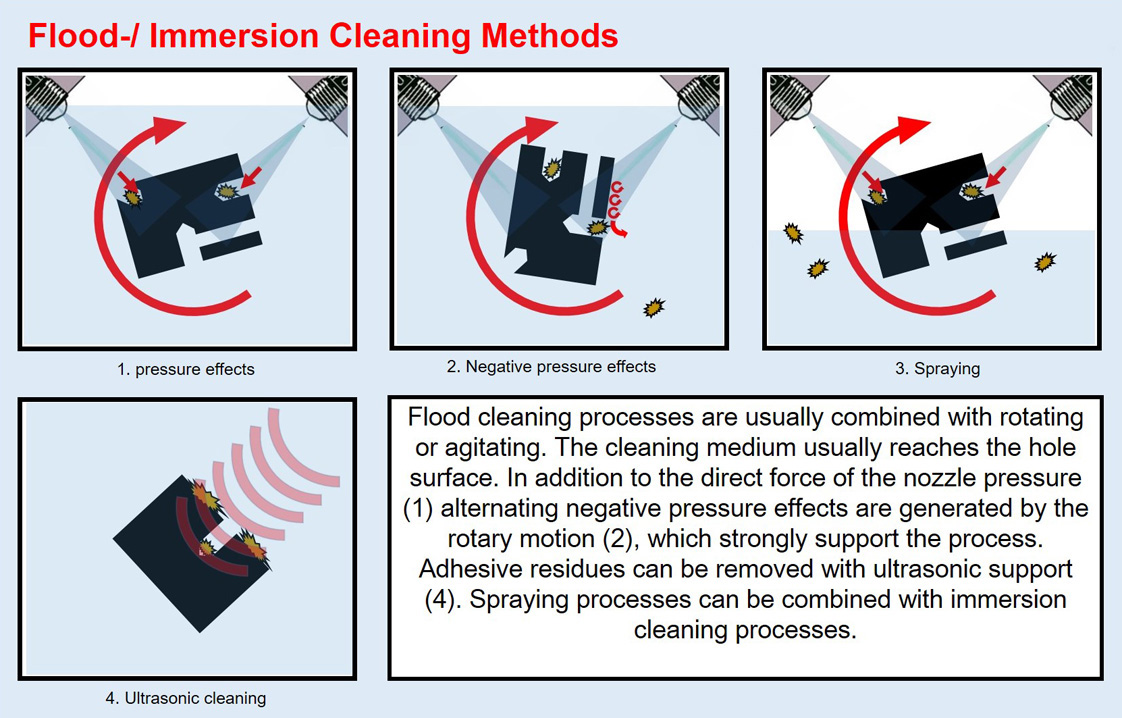Flood cleaning is suitable even for densely packed goods or for components with more complex geometries. Cleaning takes place in a completely immersed state and uses an extended washing mechanics range in addition to temperature and chemistry. Whereas the kinetic energy of jet systems has a lesser tendency to fail owing to the resistance in a liquid medium, in an immersed state methods such as injection flooding or the various options of special flood cleaning methods (e.g. ultrasonic cleaning or Cyclic nucleation/CNp) are overtaxed.

This cleaning takes place as a rule in individual baths, in serial immersion systems (LPW PowerStep) or in single-/multi-chamber systems (LPW PowerJet modular range)
Flood cleaning methods are quite clearly indicated if complex component geometries, e.g. with holes or indentations, and particular quality requirements are involved. Extended washing mechanics in the form of ultrasound, with differing frequencies and powers, which open up a host of options through alternating push-pull conditions, very efficient injection flows or even a variety of vacuum cleaning methods.
With particulate quality demands clearly below 100-200 µm or stringent requirements on film impurities, only in a few exceptional cases can flood cleaning, with its broad range of mechanical washing alternatives, be ignored. For even in this case, factors such as pressure, ultrasound, vacuum and the high self-cleaning capability of closed systems are of considerable importance. This method also offers, in conjunction with fully filtered recirculation, a clear minimizing of the recontamination risk during the process.
